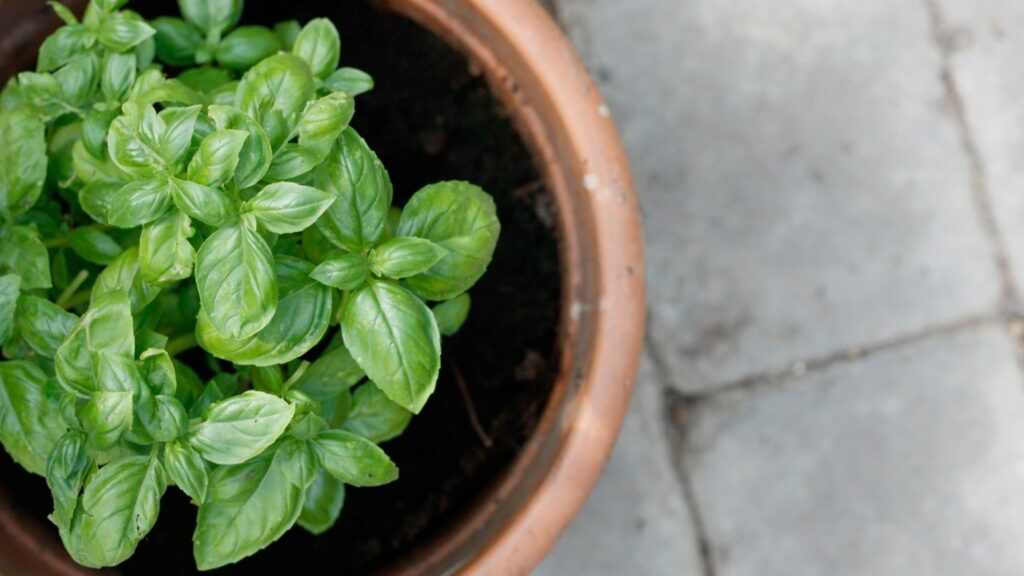
Hey there, fellow plant enthusiast! If you’ve ever dreamed of transforming your garden or kitchen windowsill into a fragrant basil haven, you’re in for a treat. Basil, with its vibrant green leaves and delightful aroma, not only elevates your culinary creations but also adds a touch of freshness to your space. In this guide, we’ll delve into the nitty-gritty of cultivating and caring for basil plants, ensuring you have a thriving herb garden at your fingertips.
1. Getting Started
Choosing the Right Variety
Basil, with its diverse array of flavours and scents, offers a delightful spectrum for your taste buds and culinary adventures. Whether you prefer the classic sweetness of Genovese basil, the exotic notes of Thai basil, or the citrusy zest of Lemon basil, the choice is yours. Select a variety that resonates with your palate, and you’ll be well on your way to cultivating a personalized herb haven.
Selecting the Perfect Spot
Now that you’ve chosen your basil variety, it’s time to find the ideal spot for your plants to flourish. Basil plants are sun worshippers, thriving under the warm embrace of sunlight. Aim for a location that receives a generous 6-8 hours of sunlight daily to ensure robust growth and flavorful leaves. If you’re opting for an indoor basil garden, strategically position your pots near a south-facing window. This placement guarantees that your basil buddies bask in the sunshine, even when they’re sheltered within your cozy home. With the perfect spot secured, your basil plants are poised to become radiant contributors to your culinary pursuits.
2. Soil Matters
Optimal Soil Conditions
For the foundation of a flourishing basil garden, pay close attention to the soil conditions. Basil, being a sun-loving herb, thrives in well-draining soil with a slightly acidic to neutral pH, ideally ranging between 6.0 and 7.0. To enhance the soil’s fertility and provide a nutrient-rich haven for your basil plants, incorporate organic matter such as compost. This not only supports their overall well-being but also contributes to the aromatic potency of the leaves, making your basil a culinary standout.
Container Gardening Tips
For those working with limited gardening space or looking to bring the herb garden indoors, container gardening is a game-changer for basil. The adaptability of basil to containers opens up a world of possibilities. When opting for pots, ensure they come equipped with drainage holes to prevent waterlogging, a common woe for many herbs. Basil detests soggy roots, and well-draining containers mitigate this risk. To further optimize your container garden, invest in a high-quality potting mix. This tailored blend provides the necessary nutrients and aeration for your basil to thrive in the confined but cozy quarters of its container. With these soil-savvy steps, you’ll be cultivating robust basil plants, even in the most spatially constrained settings.
3. Watering Wisdom
Balanced Watering Routine
Achieving a harmonious watering routine is key to nurturing thriving basil plants. While basil prefers its soil to be consistently moist, it vehemently protests against waterlogged conditions. To strike the right balance, wait until the top inch of soil feels dry to the touch before reaching for the watering can. Adjust the frequency of watering based on the weather conditions; during scorching hot spells, your basil might appreciate a bit more hydration, while cooler periods call for a more restrained approach. By attuning your watering habits to the needs of your basil, you create an environment conducive to its robust growth and aromatic leaf production.
Avoiding Foliar Wetness
One of the watchful nuances in basil care involves steering clear of prolonged foliar wetness. Basil leaves, with their tender and succulent nature, are susceptible to fungal diseases if left damp for extended periods. The solution lies in strategic watering. Direct your watering efforts at the base of the plant rather than showering the foliage. This not only keeps the leaves dry but also mitigates the risk of fungal infections taking hold. Especially in the evening, when humidity tends to rise, it’s crucial to be mindful of avoiding unnecessary moisture on the leaves. By implementing this preventative measure, you’re ensuring a healthier, happier basil plant that can flaunt its vibrant green foliage without the threat of lurking ailments.
4. Tender Loving Care (TLC) for Basil Plants
Fertilizing Tips
Nourishing your basil plants is a key aspect of their care regimen, and the rule of thumb is moderation. Basil is a moderate feeder, meaning it doesn’t require a heavy-handed approach to fertilization. To keep your basil thriving, provide a balanced, all-purpose fertilizer approximately every 4-6 weeks during the growing season. However, a word of caution – resist the temptation to over-fertilize. Too much of a good thing can lead to excessive leaf growth at the expense of flavour. Striking the right balance ensures that your basil receives the nutrients it needs without compromising the taste that makes it a kitchen favourite.
Pruning for Prosperity
In the world of basil care, pruning is your secret weapon for a lush and bushy herb garden. Regular pruning not only shapes the plant but also encourages robust growth and prevents premature flowering. When your basil plant has reached the milestone of 6-8 leaves, it’s time to get hands-on. Pinch off the tips of the stems, just above a set of leaves. Don’t be shy – the more you harvest, the more your basil will reward you with vigorous growth. This practice not only promotes a more compact and visually appealing plant but also concentrates the plant’s energy on producing fresh, flavorful leaves. So, embrace the art of pruning, and watch your basil plant flourish into a verdant masterpiece in your herb garden.
5. Troubleshooting Common Issues
Dealing with Pests
Vigilance is the gardener’s best friend when it comes to basil, and pests are no exception. Keep a keen eye out for common basil invaders such as aphids, whiteflies, and spider mites. These uninvited guests can wreak havoc on your basil’s delicate leaves. Fortunately, combating them can be done with a gentle touch. A spray of water, whether from your trusty hose or a spray bottle, can help dislodge these pests and send them packing. For a more strategic approach, consider using a solution of neem oil, a natural repellent that wards off pests without compromising the integrity of your basil.
Preventing Disease
Maintaining a disease-free basil haven involves a proactive approach centered on good gardening practices. Adequate air circulation is crucial, as stagnant air can create an environment conducive to fungal diseases. Ensure your basil plants have ample space to breathe, and avoid overcrowding. Equally important is the way you water. Say no to overhead watering, as it can leave basil leaves wet for extended periods, inviting fungal troubles. If, despite your best efforts, you spot signs of distress such as yellowing or spotted leaves, act promptly. Remove affected leaves to prevent the spread of disease, and consider treating your basil with a natural fungicide to nip potential problems in the bud. With a watchful eye and preventative measures, you’ll keep your basil vibrant and disease-free, ready to enhance your culinary creations.
Conclusion
Congratulations, green thumb! You’re now equipped with the knowledge to grow and care for basil plants like a pro. Whether you’re spicing up your favorite pasta dish or infusing your homemade lemonade with a hint of basil, your garden bounty is sure to be a hit. Happy gardening!
